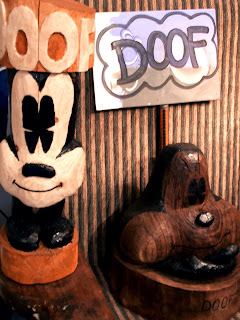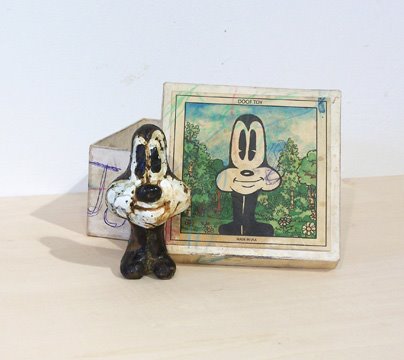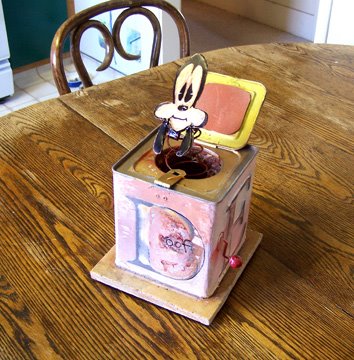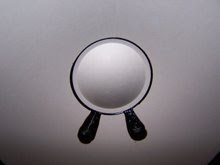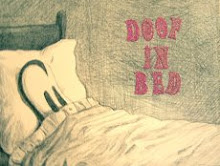The Doof Museum of Culture and History has examples of Doof artists in our archives, each with a rich history and artwork that is engaging as it is visually stunting. But one gem in a chest full of jewels is T. L. Douveres, Doof painter and visionary.
 T. L. Douveres painting in his studio/room at Arkham Asylum.
T. L. Douveres painting in his studio/room at Arkham Asylum.A Humble Beginning
After spending thirty years as a file clerk in a San Francisco law firm, T.L. Douveres (1862-1942) retired and he moved with his wife, Prudence, north to the Alhambra Valley, outside of the charming little town of Martinez. Life for Douveres became very quiet compared to the hustle and bustle of the city, so he took up landscape painting to fill his time. He was drawn to the beauty of Mt. Diablo and began to paint it in earnest. Douveres painted the mountain from all locations and in all seasons not unlike the French painter, Paul Cezanne did with his paintings of Mont Sainte-Victoire. Douveres began selling his paintings and eventually placed his work in a number of galleries. To his surprise, Douveres was becoming successful as an artist.

T.L. Douveres married Prudence Mcduffle on October 17, 1925. They met while Douveres worked as a file clerk for the law firm of Winkman, Blinkman and Nodd. Prudence supported Douveres when he began his art career but became alarmed and distraught when he started to create his Doof world. After Douveres died Prudence married a mortician and they moved to the midwest, settling in Iowa.

T. L. Douveres before the camping accident, painting at the foot of Mount Diablo, what was his favorite subject before the Doof inspired landscapes.
A Sudden Change
In 1932, something happened that changed Douveres forever. While on an artistic retreat in the Sierra, Douveres was struck by lightening in a freakish summer thunderstorm. Miraculously unscathed, Douveres returned to his studio where a strange thing happened. He became abnormally fascinated with a cartoon character named the Doof. The Doof was a minor star in cartoons produced by Music-toons productions. Music-toons was a small animation studio in the late 1920s that almost rivaled Disney only to mysteriously go out of business. Douveres convinced himself that the Doof was part of the natural world and he saw Doofs everywhere. Douveres still went out to Mount Diablo to paint landscapes but now his canvases became populated with Doof birds, Doof animals and Doof vegetation. Douveres immersed himself into his newly created world. Alas his financial success suffered from this irrational artistic change for the sales of his paintings ebbed and then dried up altogether. Undaunted, Douveres kept painting his Doof world despite the constant urging by his wife that their money was running out. Douveres ignored these pleas and his wife had no choice but to have him institutionalized. Douveres continued to paint Doofs while in the asylum, giving paintings to his fellow inmates and medical staff until one spring day he put down his brushes because suddenly he was convinced he was Napoleon Bonaparte. Douveres gave up painting for conquering Europe. He died in quiet exile a few months later.

Arkham Asylum, where Douveres spent his last seven years, was nestled in between Napa and Sonoma Valleys. It was considered one of the finest institutes in the state for the care that its patients received. One doctor in particular, Herman Ricardo, was instrumental in allowing Douveres to continue painting Doofs in Nature although it was thought that the activity was the basis of Douveres’s psychosis. The Doctor received many paintings from Douveres and in return provided the painter with all the supplies he required. Douveres befriended many other patients during his stay at Arkham, encouraged many to take up painting and helped organized painting parties that took place on the hospital grounds. Doof Tree, 1935, oil on hardboard
T.L. Douveres Gallery



















